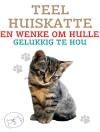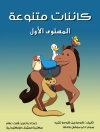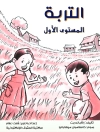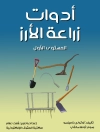In ‘The Voyages of Doctor Dolittle, ‘ Hugh Lofting invites readers into a fantastical world where the eponymous doctor, gifted with the extraordinary ability to communicate with animals, embarks on remarkable adventures. This novel combines rich, imaginative narratives with a whimsical writing style that reflects the early 20th-century fascination with exploration and the natural world. Lofting’s prose is laced with humor and charm, creating a vivid tapestry that illustrates the themes of empathy, friendship, and the quest for knowledge across cultural boundaries. The book stands as a landmark in children’s literature, not merely for its enchanting storytelling but also for its deeper moral reflections on coexistence and understanding among all creatures. Hugh Lofting, a British author and civil engineer, found inspiration for Doctor Dolittle during his experiences in the trenches of World War I, where he longed for the solace found in nature and animals. His own passion for animal welfare and the environment greatly informed his writing, ultimately leading him to create a character who serves as an advocate for harmony between humans and the natural world. Lofting’s unique perspectives fuse personal experience with broader societal commentary, enriching the narrative. ‘The Voyages of Doctor Dolittle’ is a must-read for anyone who appreciates whimsical adventure and poignant moral lessons. It appeals not only to children but also to adults, inviting readers of all ages to reflect on their relationships with animals and the natural world. Lofting’s timeless tale encourages a sense of wonder and compassion, making it a cherished addition to the literary canon.
Giới thiệu về tác giả
Hugh Lofting, born on January 14, 1886, in Maidenhead, Berkshire, England, was a prolific writer best known for his ‘Doctor Dolittle’ series of children’s books. Lofting’s literary career burgeoned with the creation of the esteemed character Doctor John Dolittle, a physician who eschews human patients in favor of animals, with whom he can communicate—a remarkable premise that endeared his works to an audience spanning multiple generations. His second book in the series, ‘The Voyages of Doctor Dolittle’ (1922), is particularly notable for its rich storytelling and won the prestigious Newbery Medal in 1923, cementing Lofting’s status as a preeminent author in children’s literature. His work is characterized by a blend of whimsical fantasy and a deep-seated respect for nature, individualism, and humanitarianism. Despite some of the dated cultural expressions in his books, which reflect the less sensitive era in which he wrote, modern adaptations have sought to preserve the enchanting narrative while aligning with contemporary values. Lofting’s literary style melds adventure with a gentle didacticism, teaching young readers about empathy, environmentalism, and the importance of understanding and embracing cultural diversity. Hugh Lofting died on September 26, 1947, leaving behind a literary legacy that continues to manifest through adaptations and continued readership of his timeless tales.












